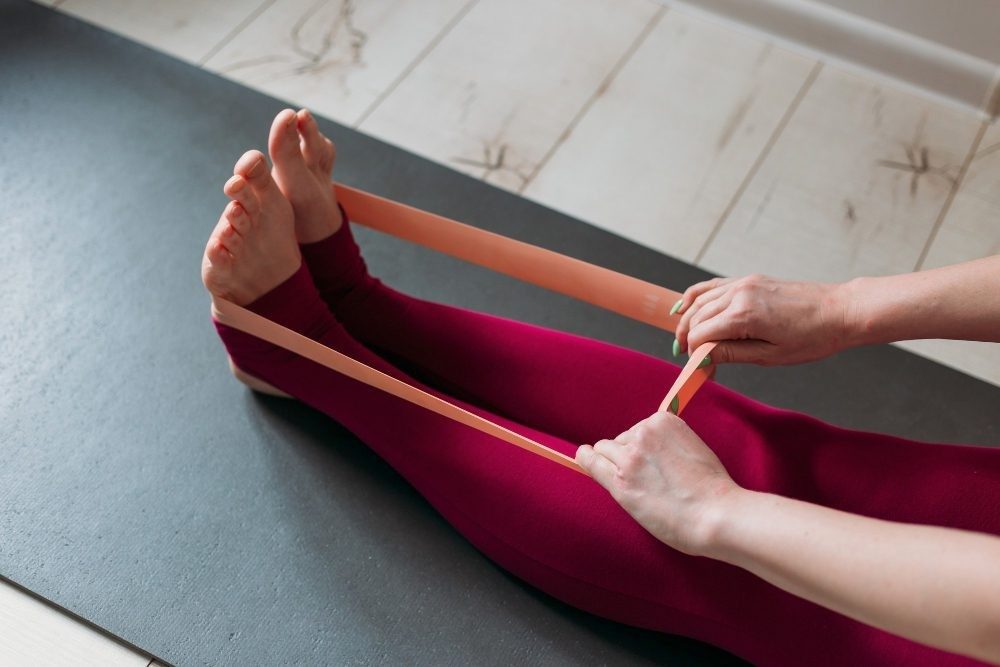

Most people have sprained their ankle at one time or another in their life - and they know just how painful it can be. But, what actually is an ankle sprain?
An ankle sprain occurs when the ankle is twisted, rolled, or turned in an awkward way. When this movement tears or stretches the ligaments in the ankle, it's considered a sprain.
There are different severities of ankle sprains - a light sprain may cause discomfort and can heal quite quickly. On the other hand, a severe ankle sprain can be debilitating and take a long time to recover - and should be paired with rehab once the ligaments are healed. Ankle sprains are commonly measured by grade, and the grades can be described as follows:
Ankle sprains can occur to anyone going about their day-to-day life. However, they are a common ailment in athletes who play contact sports. Sports like basketball, soccer and hockey all involve a lot of running, paired with stopping and starting. These movements increase the risk of twisting your ankle in a way that will injure the ligament.
Fortunately, there are some exercises you can do to strengthen your ankle and reduce the risk of injury. If you've had the misfortune of spraining your ankle, there are some stretches and rehabilitation exercises you can do to help get your ankle back into good condition, and we've listed some below.
People with an ankle sprain may experience some, or all, of the following symptoms:
People with an acute ankle sprain may experience some, or all, of the following symptoms:
The above symptoms paired with:


Regularly doing ankle exercises will help build up the muscles in the area, and this will help to protect the ligaments from getting injured. So, if you're prone to ankle sprains, play a contact sport, or just want to try and protect yourself from getting an injured ankle, you should commit to regular ankle exercises. To target the ankle muscles specifically, you can do the exercises listed above.
While your eyes play an important part in keeping balance, the body also has the ability to sense where it is in space, which is called proprioception, and this is why most people can balance standing on one leg. To improve your proprioception, you can do certain exercises. Improved balance means a lower likelihood of falling and twisting your ankle in a way that will injure the ligament. To improve your balance specifically, you can do the 'toe-heeling walking for balance' exercise mentioned above.
You don't need to be injured to wear a brace during sport - you can also wear it as a preventative measure. This tip is especially relevant for those who play a high contact sport and commonly find themselves in a position where they have a higher chance of ankle injury. Furthermore, a brace will train the body to avoid moving the ankle in a way that may cause injury. To support your ankle you can wear an ankle brace, or you can strap it with tape.
When your body is dehydrated, your run a much higher risk of experiencing a cramp. Plus, dehydration in the body causes the muscles to tense up. If a muscle cramp is particularly bad, it can lead to actual tears in some of the muscles fibres.
For this reason - and many other reasons - it's important to drink a sufficient amount of water daily. The recommended intake is around 2.6 litres a day for men and 2.1 litres a day for women.
Podiatrists are doctors that specialise in the feet and lower limbs. So, they are very well experienced and skilled at treating any ankle injuries - including ankle sprains. Ankle sprains can be extremely painful, and long-term damage can be done if they're not treated quickly and properly. So, if you suspect a sprain or have pain in your ankle, you should see a podiatrist straight away.
A qualified podiatrist will be able to conduct a physical exam or run some tests, to determine whether you have an ankle sprain and, if so, what grade it is. They'll also be able to advise you on the best way to repair and rehabilitate your condition.
Book your appointment with our podiatry team online
here
or call us on (07) 3356 3579.
| Monday | 7:40am - 6:00pm |
| Tuesday | 7:40am - 6:00pm |
| Wednesday | 7:40am - 6:00pm |
| Thursday |
7:40am - 6:00pm |
| Friday | TEMP CLOSED |
| Saturday | CLOSED |
| Sunday | CLOSED |
Ground Floor, 344 Queen Street,
Brisbane City QLD 4000
| Monday | 7:40am - 6:00pm |
| Tuesday | 7:40am - 6:00pm |
| Wednesday | 7:40am - 6:00pm |
| Thursday |
7:40am - 6:30pm |
| Friday | 7:40am - 5:00pm |
| Saturday | 7:40am - 4:30pm |
| Sunday | CLOSED |
Newmarket Village, 114/400 Newmarket Rd, Newmarket QLD 4051